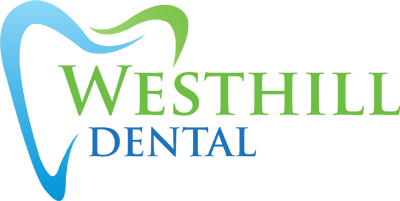Dental emergencies can arise unexpectedly, demanding prompt attention and decisive action. Whether it’s sudden severe pain, a knocked-out tooth, or a broken restoration, understanding how to navigate dental emergencies is crucial for preserving oral health. This introduction serves as a gateway to comprehending the nature of dental emergencies, the importance of quick response, and the essential steps individuals can take when faced with urgent dental situations. As we delve into the intricacies of various dental emergencies, this guide aims to empower readers with the knowledge and confidence needed to effectively address and manage unforeseen oral health challenges.
Common Types of Dental Emergencies
Toothache:
- Description: Intense and persistent pain in or around a tooth.
- Response: Rinse the mouth with warm water, floss to remove debris, and use over-the-counter pain relievers. Seek dental care for an accurate diagnosis and treatment.
Knocked-Out Tooth (Avulsed Tooth):
- Description: A tooth has been completely displaced from its socket.
- Response: Hold the tooth by the crown, rinse it gently, and try to reinsert it into the socket. If not possible, place it in milk or saliva and seek immediate dental attention.
Broken or Fractured Tooth:
- Description: A tooth is chipped, cracked, or broken.
- Response: Rinse the mouth with warm water, use a cold compress to reduce swelling, and retrieve any broken tooth fragments. Seek prompt dental care for evaluation and repair.
Lost Filling or Crown:
- Description: Dental fillings or crowns have come out.
- Response: Keep the filling or crown if possible. Use dental cement or temporary filling material to cover the exposed area. Seek immediate dental care to repair or replace the restoration.
Abscess or Gum Infection:
- Description: Swelling, pus, and severe pain may indicate an abscess or gum infection.
- Response: Rinse the mouth with warm salt water and use over-the-counter pain relievers. Urgently seek dental care to address the infection and prevent complications.
Objects Caught Between Teeth:
- Description: Foreign objects, such as food or debris, are stuck between teeth.
- Response: Gently try to remove the object with dental floss. Avoid using sharp or pointed objects. If unsuccessful, seek professional help.
Soft Tissue Injuries:
- Description: Injuries to the lips, cheeks, gums, or tongue, cause bleeding.
- Response: Clean the injured area gently with warm water. Apply a cold compress to reduce swelling, and use gauze to apply gentle pressure if there is bleeding. Seek immediate attention for severe injuries.
Orthodontic Emergencies:
- Description: Issues with braces, wires, or orthodontic appliances causing discomfort.
- Response: Use orthodontic wax to alleviate discomfort. If a wire is poking, try to gently push it into place with a cotton swab. Seek orthodontic care for adjustments.
Preparing for a Dental Emergency: What Patients Should Know
Dental emergencies can happen unexpectedly, and being prepared can make a significant difference in the outcome. Knowing what to do in advance and having a plan in place can help alleviate stress and ensure a prompt and effective response. Here’s a guide on what patients should know to prepare for a dental emergency:
1. Know Your Dentist’s Contact Information:
- Keep your emergency dentist’s in Greenville contact information easily accessible, including their emergency contact number. In an emergency, having this information at hand can save a great deal of time. Rinse it gently and try to reinsert it into the socket.
2. Create an Emergency Dental Kit:
- Assemble a small dental emergency kit with essentials like gauze, dental floss, a small container with a lid, over-the-counter pain relievers, and orthodontic wax (if applicable). Keep it in an easily accessible place.
3. Understand What Constitutes a Dental Emergency:
- Be familiar with common dental emergencies, such as severe toothaches, knocked-out teeth, or broken dental restorations. Knowing when to seek immediate care can prevent complications.
4. Have a Plan for Tooth Trauma:
- In the case of a knocked-out tooth, know the steps to take:
- Hold the tooth by the crown, not the root.
- Try putting it in the socket after giving it a gentle rinse.
- If not possible, place it in a container with milk or saliva.
- Seek emergency dental care immediately.
5. Protect Against Oral Injuries:
- Use appropriate protective gear during sports activities to minimize the risk of dental injuries. A properly fitted mouthguard can prevent trauma to the teeth and mouth.
6. Keep a List of Medications:
- Maintain an updated list of medications you are taking, as this information can be crucial for dental professionals in emergencies.
7. Know How to Handle Dental Pain:
- Understand basic pain management techniques, such as rinsing the mouth with warm water, flossing to remove debris, and using over-the-counter pain relievers as directed.
8. Familiarize Yourself with Dental Insurance Coverage:
- Understand your dental insurance coverage, including emergency services. Knowing what is covered can help you make informed decisions during a dental crisis.
9. Stay Calm and Act Quickly:
- In the event of a dental emergency, staying calm is essential. Act quickly but thoughtfully, and contact your dentist or seek emergency dental care promptly.
10. Regularly Update Emergency Information:
- Ensure that your emergency contact information with your dentist is up-to-date. This includes changes in phone numbers, addresses, and any pertinent medical information.
Finding an Emergency Dentist and Knowing When to Seek Immediate Care
Dental emergencies can happen at any time, and knowing how to find an emergency dentist and when to seek immediate care is crucial for timely and effective treatment. Here’s a guide to help you navigate emergency dental situations:
1. Know Your Regular Dentist’s Policy:
- Familiarize yourself with your regular dentist’s policy on emergencies. They may have specific after-hours contact information or recommendations for urgent care.
2. Search Online Directories:
- Use online directories to find emergency dentists in your area. Look for those with positive reviews and convenient hours for emergency services.
3. Utilize Dental Insurance Resources:
- Contact your dental insurance provider to inquire about emergency dental coverage and to get a list of in-network emergency dentists.
4. Ask for Recommendations:
- Seek recommendations from friends, family, or colleagues who have experienced dental emergencies. Personal referrals can help you find a trusted emergency dentist.
5. Check Emergency Dental Clinics:
- Some areas have dental clinics specifically dedicated to emergency care. Research and identify any such clinics near you for immediate assistance.
6. Understand What Constitutes a Dental Emergency:
- Know the signs of a dental emergency, such as severe toothaches, knocked-out teeth, broken dental restorations, or significant oral injuries. Understanding when to seek immediate care is crucial.
7. Common Situations Requiring Immediate Care:
- Severe Toothache: Especially if accompanied by swelling or fever.
- Knocked-Out Tooth: Time is critical for successful re-implantation.
- Broken or Fractured Tooth: Immediate attention can prevent further damage.
- Abscess or Gum Infection: Prompt care is vital to prevent the infection from spreading.
8. Contact Your Dentist First:
- If you have a regular dentist, try contacting them first, even after hours. Some dental offices have emergency contact information, and your dentist may provide guidance or arrange for immediate care.
9. Consider Telehealth Options:
- Inquire about telehealth or virtual consultation options. Some dentists offer remote assessments to determine the urgency of the situation and provide initial advice.
10. Trust Your Instincts:
- If you are uncertain about the severity of a dental issue, trust your instincts and seek professional advice promptly. Ignoring a potentially serious problem can lead to complications.
11. Be Prepared for Financial Considerations:
- Understand the financial aspects of emergency dental care. Inquire about fees, insurance coverage, and payment options to ensure a clear understanding.
Post-Emergency Management: Follow-up Care and Prevention Tips
Successfully navigating a dental emergency is just the beginning. After immediate care, it’s crucial to follow up with post-emergency management and adopt preventive measures to safeguard your oral health. Here’s a guide to post-emergency care and preventive tips:
1. Schedule a Follow-up Appointment:
- After receiving emergency care, schedule a follow-up appointment with your regular dentist. This ensures a thorough assessment of your oral health and the effectiveness of the emergency treatment.
2. Adhere to Prescribed Medications:
- If your dentist prescribed medications after the emergency, such as antibiotics or pain relievers, take them as directed. Follow the full course of medication even if symptoms subside.
3. Maintain Excellent Oral Hygiene:
- Resume regular oral hygiene practices, including brushing, flossing, and using mouthwash. Pay extra attention to the affected area, following any specific instructions given by your dentist.
4. Use Prescribed Mouthwash or Rinse:
- If your dentist recommends a specific mouthwash or rinse for post-emergency care, use it as directed. These products may aid in healing and prevent infection.
5. Monitor for Any Changes:
- Be vigilant for any changes in symptoms or the appearance of the affected area. If you notice unusual discomfort, swelling, or other issues, contact your dentist promptly.
6. Follow Dietary Recommendations:
- If your dentist provided dietary recommendations or restrictions post-emergency, adhere to them. Certain foods or behaviors may need to be avoided to facilitate healing.
7. Implement Preventive Measures:
- Take preventive measures to avoid future emergencies:
- Use a mouthguard during sports activities to prevent dental injuries.
- Avoid chewing hard objects, such as ice or popcorn kernels, to prevent tooth fractures.
- Quit smoking to reduce the risk of gum disease and other oral health issues.
8. Consider Orthodontic Adjustments:
- If your emergency involves orthodontic issues, such as a broken wire or displaced bracket, schedule an orthodontic appointment for adjustments. Delaying can lead to discomfort and further complications.
9. Stay Hydrated:
- Drinking plenty of water promotes overall health and aids in oral hygiene. It can also help prevent dry mouth, which is conducive to bacterial growth and oral issues.
10. Attend Regular Dental Check-ups:
- Maintain regular dental check-ups as recommended by your dentist. Routine exams allow for the early detection of potential issues and preventive care.
Navigating a dental emergency requires a combination of swift action, effective management, and diligent follow-up care. In this comprehensive guide, we’ve explored the diverse landscape of dental emergencies, providing insights into their common types, steps for immediate response, and essential post-emergency care. Understanding the importance of finding an emergency dentist and knowing when to seek immediate care empowers individuals to take control of their oral health in critical situations.


